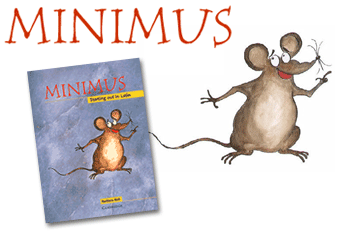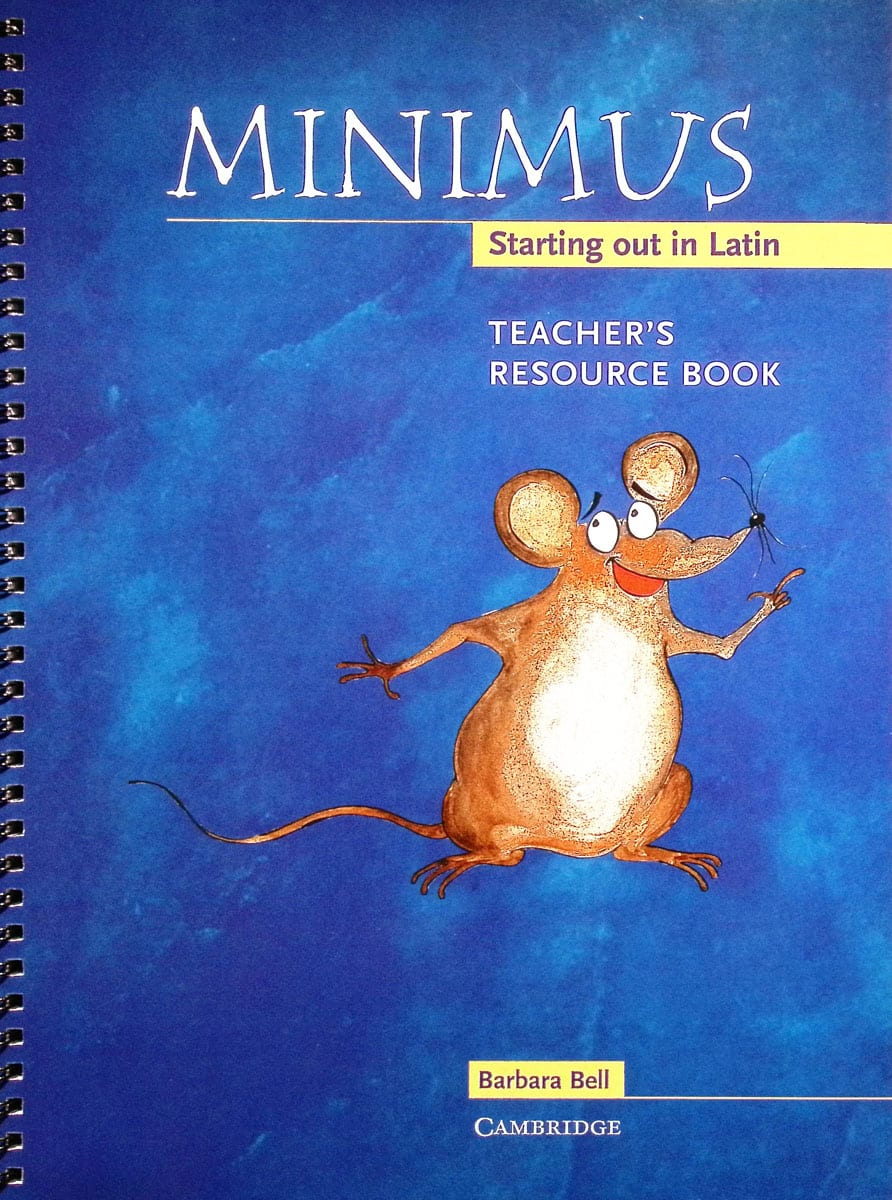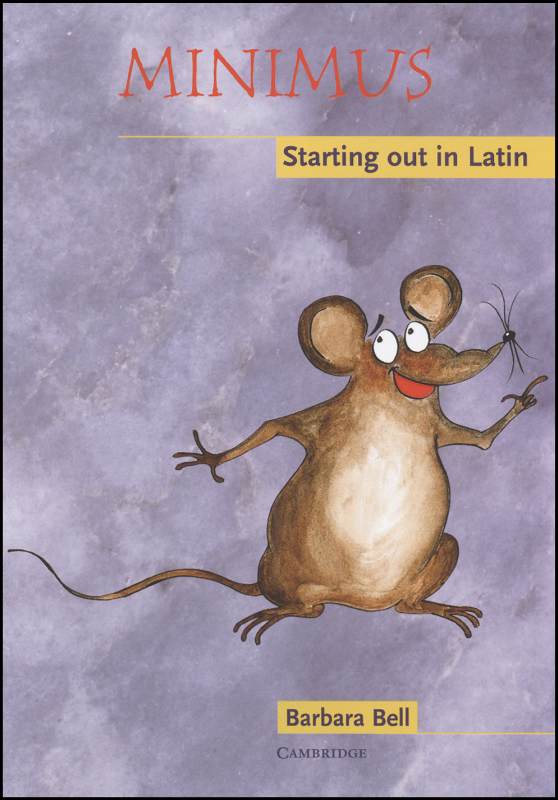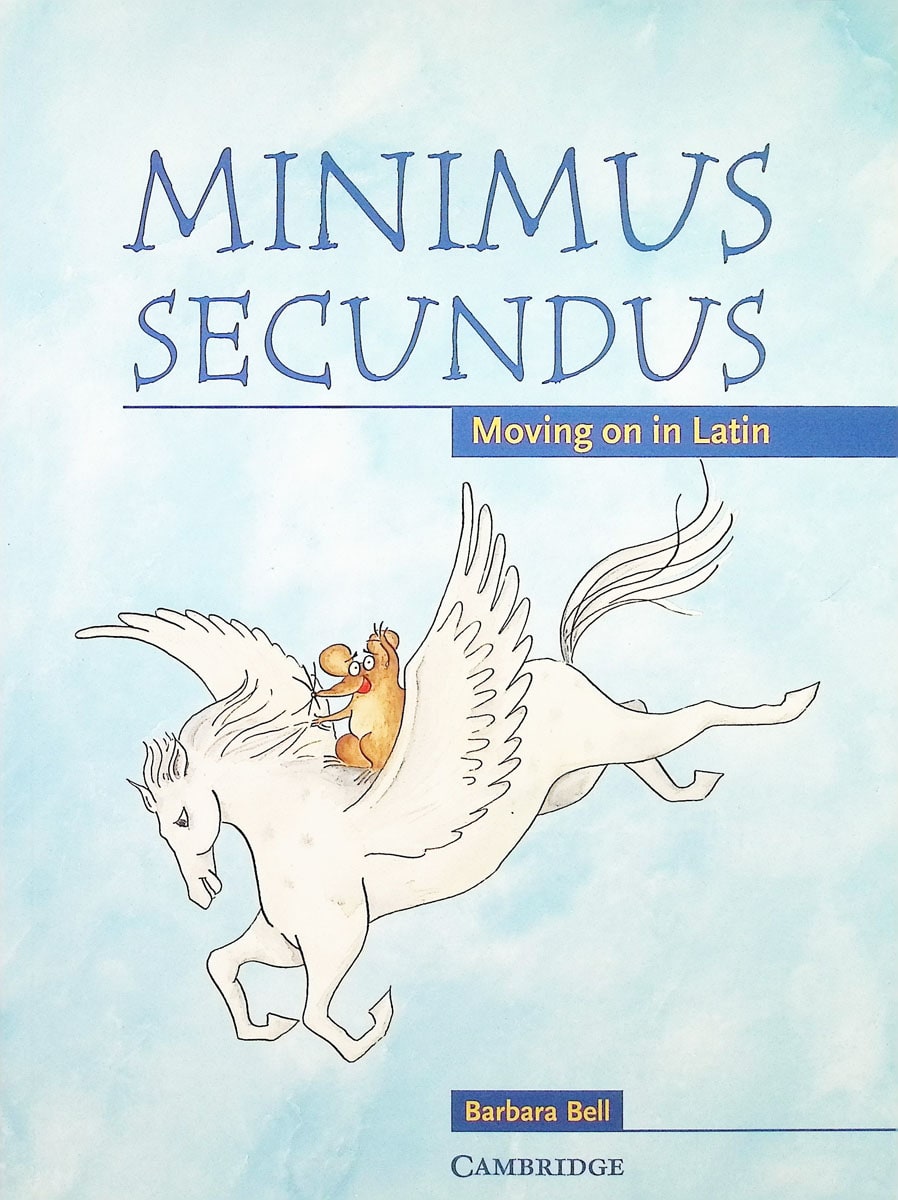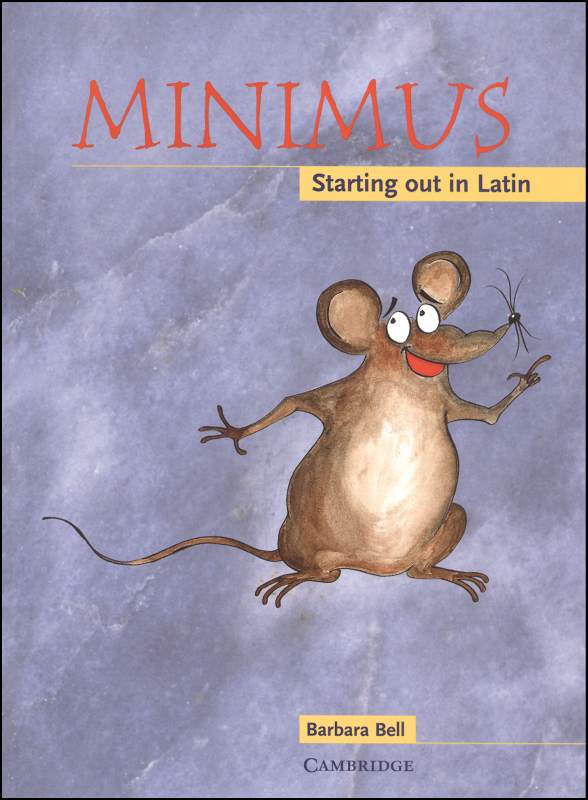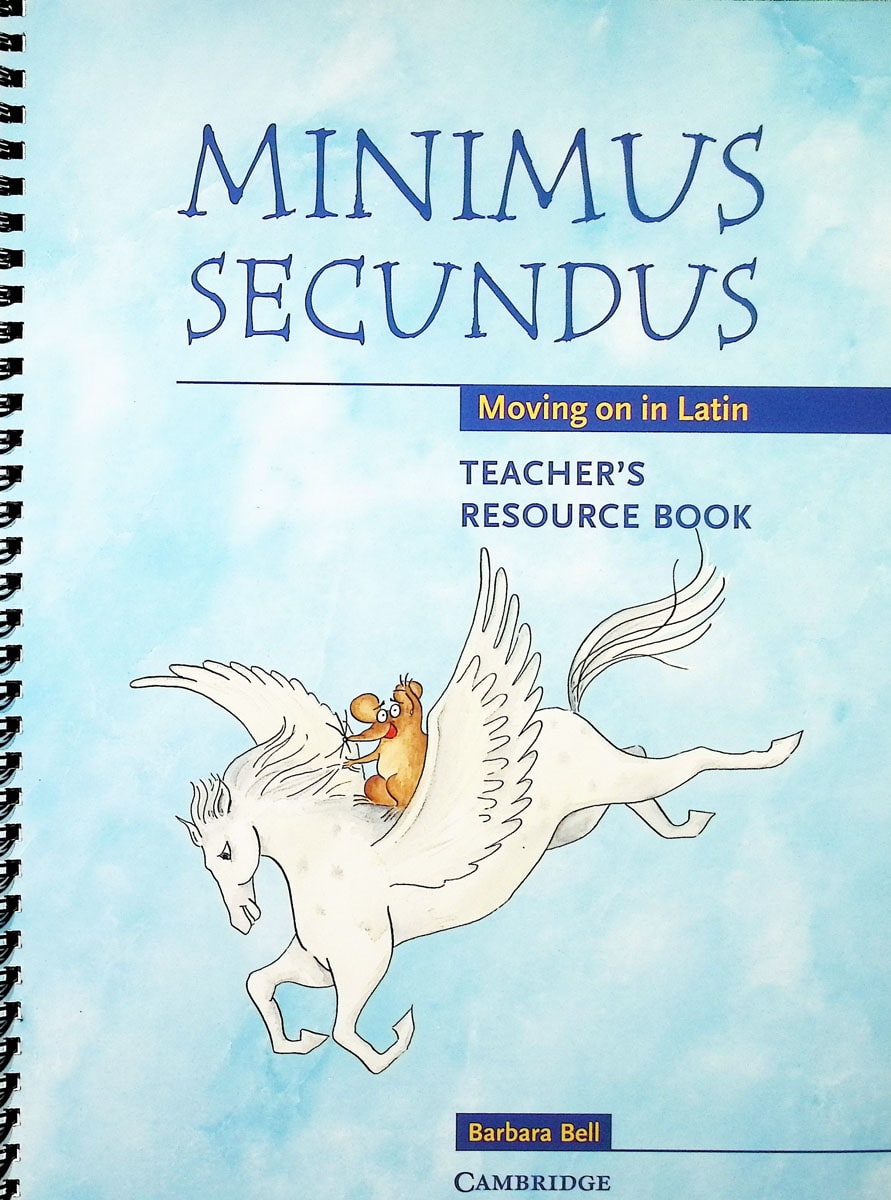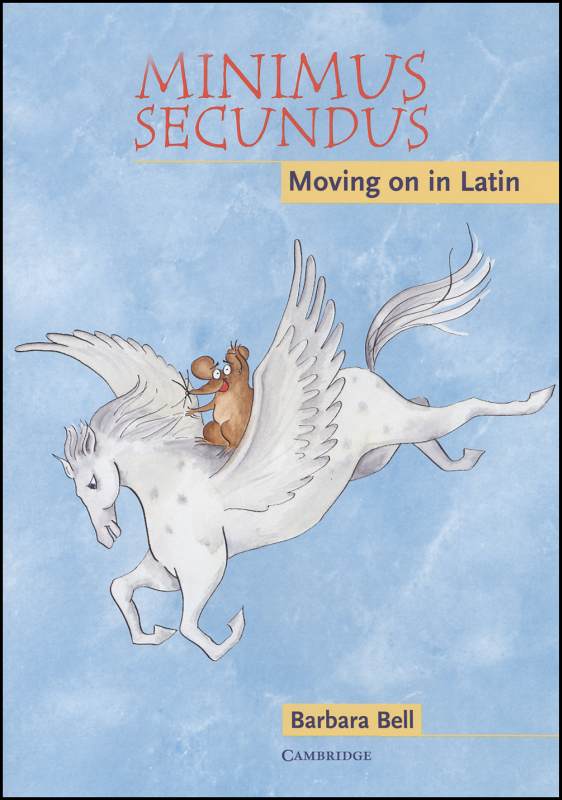Barbara Bell has written two courses that take a very creative approach to teaching Latin to students in grades two through six. In Minimus: Starting out in Latin and Minimus Secundus: Moving on in Latin, cartoons stories plus tales from Greek and Roman mythology mix with history and archaeology to teach Latin using a nicely balanced conversational/grammatical approach. The courses take their name from Minimus the Mouse, a character used throughout the lessons.
The centerpiece of both courses is the ongoing cartoon story of an actual, historical Roman family that lived in Roman-occupied Britain at the end of the first century A.D. Both in the cartoon story and the rest of the lesson, frequent references are made to actual excavations and historical events, often accompanied by illustrations of artifacts. Most of the lesson material is connected through the storyline. The exceptions are the “Latin Roots” section of each lesson that teaches English vocabulary based on Latin roots and the stories from Roman and Greek mythology that conclude each lesson. This story-based approach is likely to keep children’s attention better than a “disembodied” study of Latin.
Minumus teaches grammar but within the context of the conversational approach for the most part rather than in the orderly, grammatical fashion used in programs such as those from Memoria Press. Nevertheless, a “Grasp the Grammar” section in each lesson does teach a significant amount of grammar. For example, students have been taught the definitions of “sum, es, sumus,” and “estis” in the first lesson. In the third lesson, new vocabulary words used in the story include “scribe, scribit, purgo, purgat,” and “laborant.” At this point, the grammar lesson explains action verbs and their placement in Latin sentences. It then points out that the various verb endings tell us who is performing the action. Children are to look back through the story to see who is performing the action when verbs have particular endings. However, an actual conjugation isn’t presented within the lessons until the beginning of the second course, although one activity sheet in the first course does present conjugated verbs to be translated into English. Meanwhile, the vocabulary used in each lesson includes singular and plural nouns in the various cases as well as first-, second-, and third-person verbs in both singular and plural forms, even though the grammatical explanations might not yet have been presented.
The second course adds imperfect tense verbs, but it also is more explicit and expansive on other aspects of grammar. The second lesson introduces the concept of masculine, feminine, and neuter nouns as well as adjectival agreement. In other lessons, it covers topics such as irregular verb forms, compound verbs such as “adsum” and “subsum,” and participles.
The teacher’s resource book sometimes suggests points at which you might want to provide further grammatical explanations; you might want to do so if you have a very analytical student who is trying to figure out things, such as why the endings of nouns change. So, while grammar is taught, grammatical explanations sometimes lag behind the vocabulary that students are reading in the story.
The first course uses only present-tense verbs and first- and second-declension nouns. Along the way, it also teaches a great deal of basic grammar that applies to both English and Latin as it teaches about nouns, verbs, pronouns, infinitives, adverbs, adjectives, conjunctions, subjects, objects, and other topics.
Most lessons follow a similar pattern. They begin with the cartoon story. The story is introduced in English so students understand the context of the story. All cartoon captions are in Latin, but the cartoon illustrations also help students grasp the meaning. New vocabulary is presented as “Words to Help,” with words presented in the order in which they appear in the story. “Words to Remember” listed at the end of the lesson highlight key vocabulary words from the chapter that students should know. “Grasp the Grammar” explicitly teaches grammar, usually including some sort of exercise or activity. Students will need to answer grammar questions either orally or in writing. (In the second course, students should definitely be writing out many of their responses.) The “Roman Report” relates events and customs generally in a context that connects to characters in the storyline or to Roman life in general. Sometimes, the report includes discussion questions. “Latin Roots” and the “Mythology” story generally come next. “Words to Remember” at the end include a small cartoon of Minimus the Mouse repeating the key grammatical concept of the lesson. Additional activities from the teacher’s resource book are optional but worthwhile.
For each course, there are a non-consumable, full-color student book, a teacher’s resource book, and an audio CD. Parents already somewhat fluent in Latin could probably work from the student book alone, but most parents will want the teacher’s resource book. It includes translations of the cartoon scripts into English for each lesson, answer keys, background information, additional teaching suggestions, and activities. While the student book for Minimus Secundus includes a glossary at the back, the first course’s student book does not. Instead, a glossary at the back of the teacher’s resource book may be photocopied and provided to students. The teacher’s resource book does not include images of student pages, so the teacher will either need his or her own student book or will need to share with the student.
The teacher’s resource book also has 35 reproducible activity pages that stretch lessons across the curriculum. Some activities such as labeling the Roman family’s genealogical tree and “dressing” a Roman soldier directly reinforce lesson material, while the paper doll and clothing for the Roman mother are just for fun. Among the other activities are writing, puzzles, art projects, and map work. The activities are not essential to the lessons, but most are educationally useful.
The audio CD for each course has brief introductory information, repeating some of the information from the teacher’s resource book. Then it has the introduction to each cartoon story followed by a dramatized reading for each cartoon story with different voice actors for each character. I would consider this optional.
The courses are secular, but they do have numerous stories of pagan gods and goddesses. Also, lesson 12 in the first book, titled “Gods! Hear our prayers!” has characters offering sacrifices and praying to pagan gods. This lesson is presented as part of the historical reality rather than an affirmation of paganism. The teacher’s resource book says that the child probably made a natural recovery and suggests a discussion about the development of medical treatments over time. Still, this story along with the many stories from mythology might be off-putting to Christian families. While some of the myths are useful for their moral lessons, it seems to me that skipping the myths should not affect the Latin lessons themselves. It is important to note that there are a few “Christian” references in the teacher’s resource book that you normally don’t find in secular resources. The teacher’s book suggests that for the third lesson in the first book students write a prayer for help with “problems of hunger, war, disease, etc….” and an activity page mentions the “Pater Noster” as a well-known Christian prayer.
Courses do need to be taught; even if older children can work through lessons on their own, they need to be discussing the material. The courses should be easy for homeschooling parents to use, even for those without a Latin background.
Minimus: Starting out in Latin is recommended for ages 7 to 10 while Minimus Secundus is recommended for ages 10 to 13. The vocabulary and grammar in the first course might be too much for some seven-year olds, so check it out before buying. You can view a free sample chapter online by clicking here.
You should probably take a slow approach working through these courses, using suggested activities from the teacher’s resource book to stretch each of the twelve lessons in each course over one or two weeks. You should review vocabulary and grammar concepts frequently. Older students can certainly move more quickly, perhaps even completing both courses within one school year. But don’t shortcut by skipping all of the supplemental activities since many of them are very useful.
Personally, I like the combination of authentic history incorporated into the storyline of a family to which children can relate. Presenting the cartoon story in Latin seems to be an excellent device for motivating students to learn vocabulary and think about Latin usage. I also prefer the “gentle” grammar instruction that teaches grammar at points where it helps students rather than “front-loading” it.
Note: Don't be confused by the word "revision." The teacher’s resource book uses the word “revision” in the British fashion for what Americans would call “review.”




